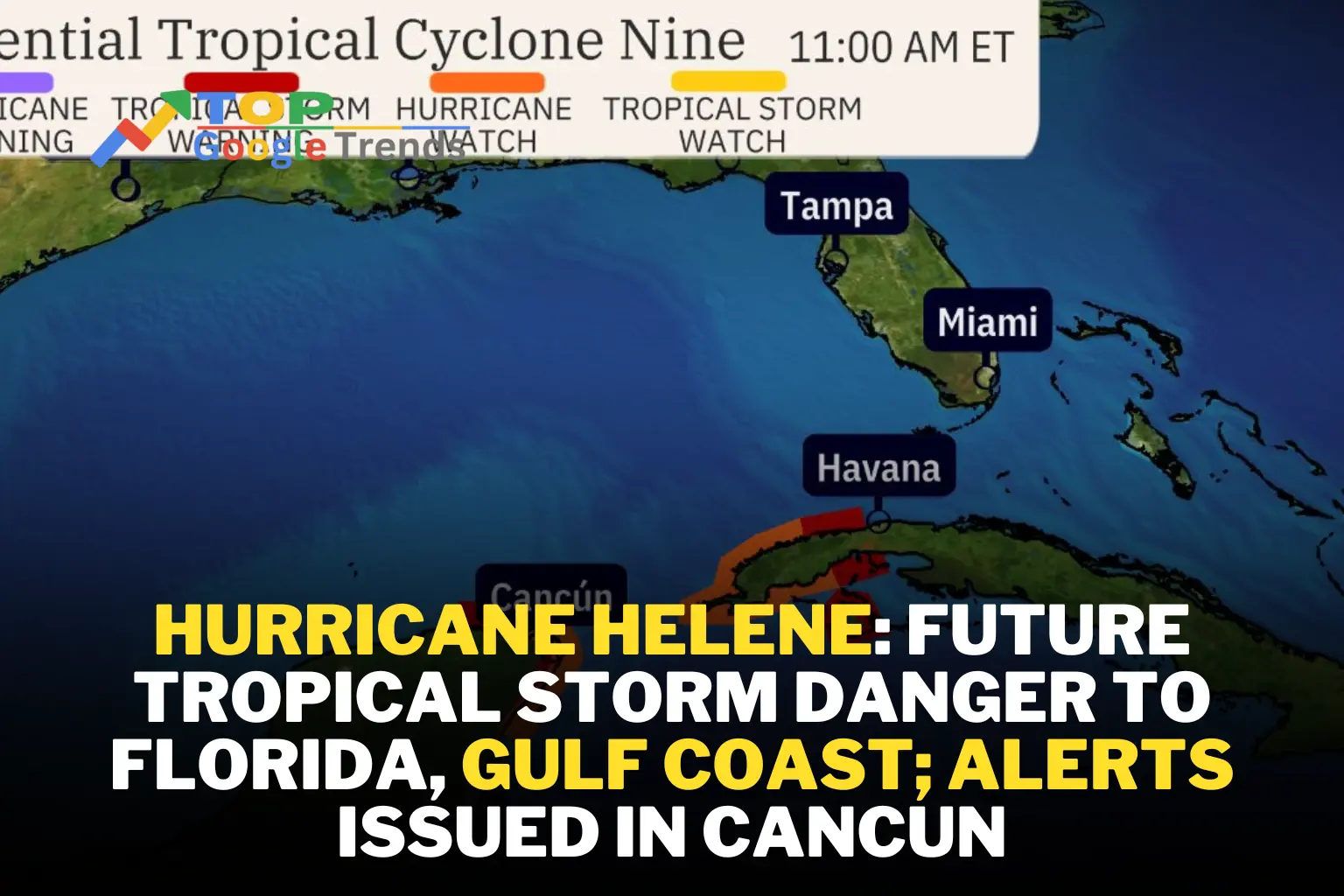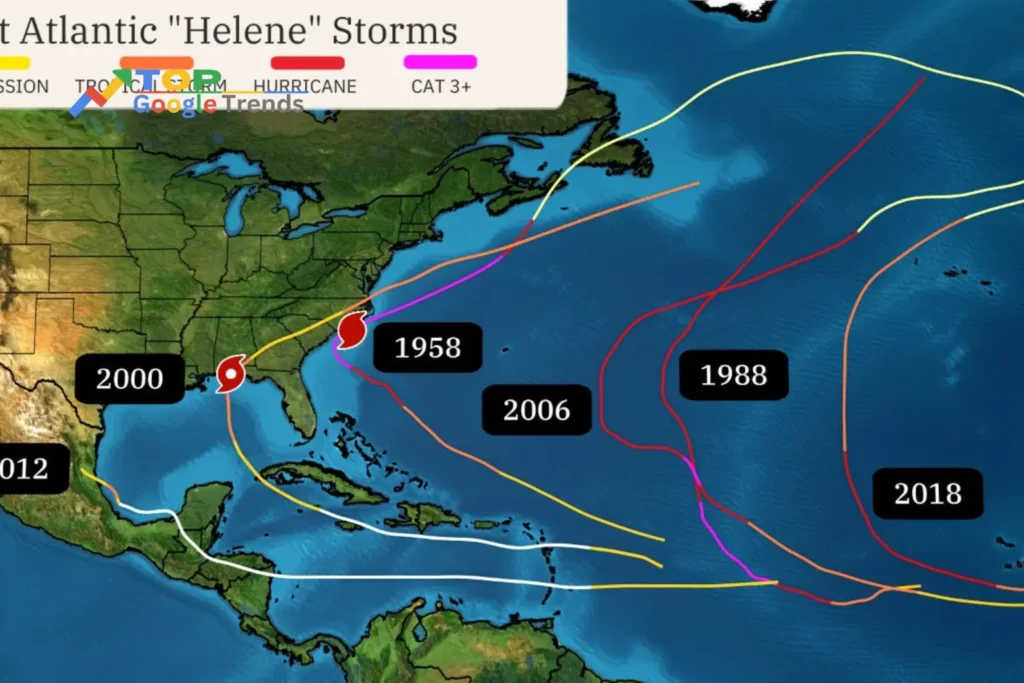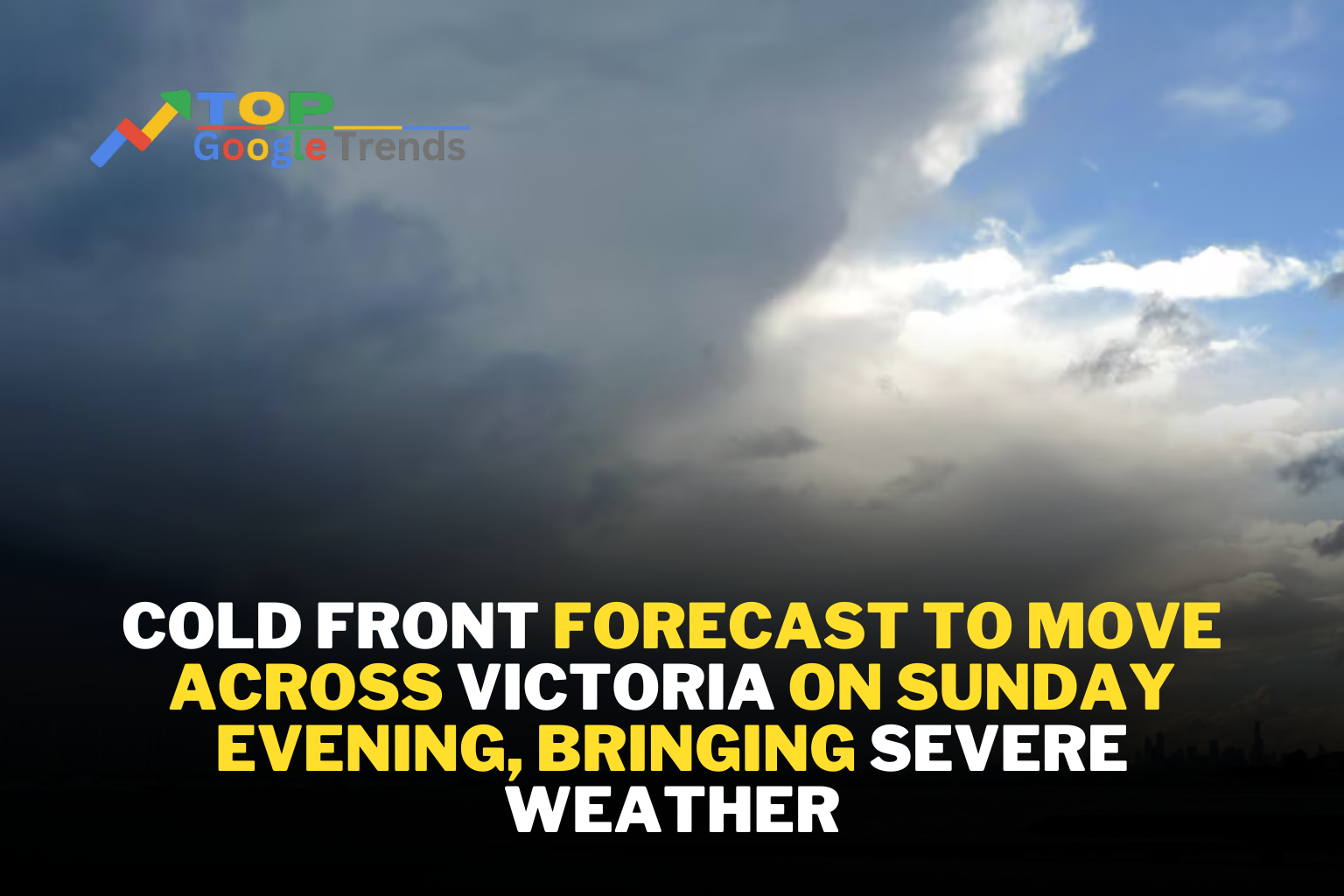
With the Atlantic hurricane season in full swing, Hurricane Helene has emerged as a significant weather system, currently making its way toward the Gulf Coast. This article provides a comprehensive look at Helene, exploring its formation, projected path, potential dangers, and how residents can prepare.
Formation of Hurricane Helene
Development from a Tropical Storm
Hurricane Helene began as a tropical disturbance off the coast of Africa. As it moved westward across the warm waters of the Atlantic, it gained strength, evolving into a tropical storm. Warm sea temperatures, combined with favorable atmospheric conditions, helped fuel its intensification into a full-fledged hurricane. These conditions allowed Helene to strengthen rapidly, raising alarms for those in its projected path.

Tracking Hurricane Helene’s Path
Current Location and Movement
As of the latest reports, Hurricane Helene is situated several hundred miles off the Gulf Coast, moving west-northwest at an approximate speed of 15 mph. Meteorologists are closely monitoring Helene’s track, as slight deviations in its path could mean the difference between a direct hit on the coastline or a glancing blow.
Also Read: Andrew Tate Allegations of Sexual Assault and Violence, Accused Of Rape By 2 Women
Influencing Weather Systems
Several weather systems in the Atlantic are influencing Helene’s trajectory. A high-pressure system to the north is steering Helene westward, but forecasters are watching for any weakening in this system, which could cause Helene to veer north, potentially sparing some areas while threatening others. Continuous monitoring is key, as these systems can change rapidly, affecting Helene’s path.
Potential Threats to the Gulf Coast
Hurricane Helene poses a serious threat to multiple states along the Gulf Coast, with Florida, Louisiana, and Mississippi most at risk due to their proximity to the storm’s projected landfall zone.
Florida’s Panhandle
The Florida Panhandle is no stranger to hurricanes, and Helene could bring severe weather to this area. Residents should prepare for intense winds, heavy rainfall, and significant flooding, particularly in low-lying areas. Coastal regions may experience life-threatening storm surges, where ocean water is pushed inland by the powerful hurricane winds.
Louisiana and Mississippi Coasts
In Louisiana and Mississippi, flood-prone areas could see extensive damage due to both the rainfall and storm surge. These states are particularly vulnerable to hurricanes because much of their land lies below sea level, which exacerbates flooding risks. Local authorities may issue mandatory evacuations for residents in high-risk zones, and it is crucial to heed these warnings.
What Makes Hurricane Helene Dangerous?
Heavy Rainfall and Flooding
Hurricane Helene is expected to drop 5 to 10 inches of rain in some areas, with isolated spots potentially receiving even more. This deluge can cause widespread flash flooding, especially in regions that have already experienced significant rainfall this season. Flooding is often the deadliest aspect of hurricanes, as it can occur rapidly and unexpectedly, cutting off roads and trapping residents in their homes.
Storm Surge Risk
Storm surges are one of the most dangerous aspects of hurricanes. As Helene approaches the coast, its strong winds will push seawater toward the shore, creating a storm surge that could inundate coastal communities. Even a small storm surge can result in severe flooding, especially in areas with low elevation. The Gulf Coast’s flat topography only amplifies this threat, as there is little to prevent the water from traveling far inland.
Preparing for Hurricane Helene
Evacuation Plans and Routes
If you live in an area that may be affected by Hurricane Helene, now is the time to review your evacuation plan. Identify multiple routes out of your area, as some roads may become impassable due to flooding. Know where you will go, whether it’s to a friend’s house, a hotel, or a designated shelter. It’s always better to leave early and avoid the last-minute rush of traffic.
Emergency Supplies and Kits
Don’t wait until the last minute to gather your emergency supplies. Stock up on essentials like water, non-perishable food, flashlights, batteries, and first-aid kits. Also, remember to pack personal items such as medications, important documents, and toiletries. If you have pets, ensure you have enough food and supplies for them as well.
The Role of Local Authorities
Issuing Warnings and Evacuations
Local governments are closely monitoring Helene’s progress and will issue evacuation orders if necessary. These orders are not made lightly—they are based on extensive data and modeling to ensure the safety of residents. If an evacuation is ordered for your area, it is essential to comply. Staying behind can put both your life and the lives of first responders at risk.
Opening Shelters and Resources
In the event of widespread evacuations, local authorities will open emergency shelters. These shelters provide a safe place to stay for residents who cannot evacuate to a hotel or friend’s house. It’s a good idea to locate the nearest shelter ahead of time and have a plan in place for getting there if necessary.
After the Storm: What to Expect
Cleanup and Safety
Once Hurricane Helene passes, the danger is not over. Cleanup efforts can be dangerous, with downed power lines, flooded streets, and debris posing hazards. Take your time when returning home and avoid areas that are still flooded. Be cautious when removing debris, and always wear protective clothing to prevent injuries.
Returning Home Safely
After evacuating, do not return home until local authorities give the all-clear. Even if the storm appears to have passed, hazards like damaged roads, flooding, and power outages may persist. Inspect your home for structural damage before entering, and be cautious of any lingering floodwaters, which may be contaminated.
Read more: Future Tropical Storm Helene A Hurricane Danger To Florida
FAQs
How strong is Hurricane Helene expected to get?
Hurricane Helene is currently forecasted to reach Category 3 status, with wind speeds exceeding 115 mph. However, its intensity could change as it approaches land.
What is a storm surge, and how does it form?
A storm surge is the abnormal rise of water levels due to a hurricane’s winds pushing seawater inland. This surge can cause severe flooding, especially in coastal areas.
How can I stay updated on Helene’s progress?
To stay updated, follow weather apps, local news stations, and official alerts from NOAA. You can also sign up for emergency text alerts from your local government.
4. What should I do if my area is ordered to evacuate?
If an evacuation order is issued, leave as soon as possible. Follow designated evacuation routes, and take your emergency supplies with you.
How long will it take for the Gulf Coast to recover after the storm?
Recovery time depends on the severity of the storm’s damage. Power outages, flooding, and road closures could last for days or even weeks in the worst-hit areas. Stay informed and be patient during the recovery process.



1 comment on “Hurricane Helene: Future Tropical Storm Danger To Florida, Gulf Coast; Alerts Issued In Cancun”